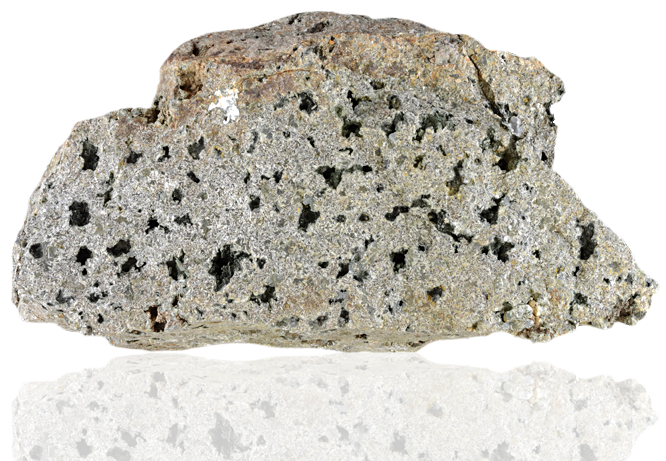
Fact sheet
This vesicular basalt comes from Creag Brimishgan on the Isle of Mull, Inner Hebrides, Scotland. It was erupted during the Paleogene igneous province that erupted in a short time period across Scotland, northern England, Northern Ireland and Greenland. The rock was subjected to low-grade metamorphism and fluid ingress as later lavas covered this one, and the cavities (vesicles) that originally formed as gas bubbles in the lava were filled with secondary minerals such as the zeolite mineral pumpellyite.
In thin section the rock is a coarse grained basalt, with a framework of plagioclase laths 1-3 mm long that have been extensively altered to clays. Pyroxene is much less altered and exhibits a poikillitic texture (a large grain containing smaller grains of another species). Vesicles appear angular rather than spherical and are filled by fine-grained pumpellyite lining the cavities and forming delicate rosettes of needle-shaped crystals.
The United Kingdom Virtual Microscope (UKVM) collection consists of igneous, sedimentary and metamorphic rocks from around the UK.
It is intended as a teaching resource, helping to tell the story of the common rock types and how they form, and reflecting the history of the UK at the margins of the continent of Europe. The collection is a series of teaching sets, for example igneous rocks from the North Atlantic Igneous Province and SW England; high-temperature metamorphic rocks from Scotland and low-temperature metamorphic rocks from Wales; and sedimentary rocks, including English limestones and sandstones.






